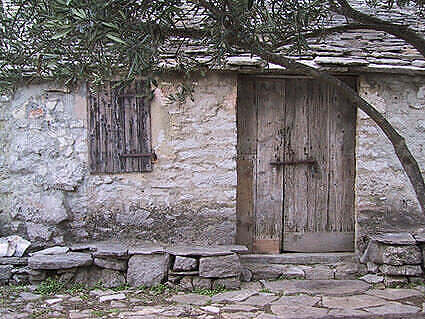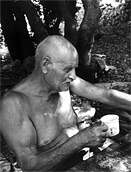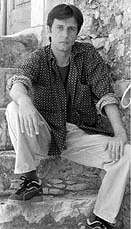
dragodid.org
Projekt Dragodid je inicijativa fokusirana na proučavanje i primjenu tehnika, materijala i struktura predajnog (narodnog, tradicijskog) graditeljstva na našem kršu. Ishodište projekta je selo Dragodid na otoku Visu, a glavne aktivnosti su organizacija suhozidnih graditeljskih radionica i popularizacija suhozidne tehnike gradnje.
Project Dragodid is the initiative mainly focussed on vernacular architecture, specifically dry-stone and other materials and building techniques in Croatian rural karst (which are similar or the same throughout the Mediterranean). Project started in Dragodid, which is a small seasonally inhabited village on Vis Island, as an international arhitecture students’ workshop during which the roof for a small auxiliary object in the village was rebuilt.
Since 2010 the activities have spread along the Eastern Adriatic coast and on the Internet with partners from civil society, local authorities and nature and heritage protection bodies. Many dry-stone objects have been rebuilt and two brochures on building techniques have been published. The project was awarded European Union Cultural Heritage Prize – Europa Nostra Award 2011.

 Andrija Suić (1926-2007)
Andrija Suić (1926-2007)
 Igor Dmitrović Dimi (1976-2007)
Igor Dmitrović Dimi (1976-2007)
 Zoran Franičević (1957-2008)
Zoran Franičević (1957-2008)
DRAGODID VILLAGE
Dragodid is a village consisting of only a few houses in the northwest part of the island of Vis, about a fifty minutes’ walk from town Komiža. There is no electricity or running water in Dragodid.
The village is founded by farmers’ family Suić at the beginning of the 19 century. The village grew with the family since the second half of the 20 century when it was abandoned. Nevertheless, it’s still occasionally inhabited: some parts of vineyard are still being cultivated by Suić family and other heirs living in Komiža, and rosemary is still seasonally harvested in the hills nearby. From time to time, hikers from Komiža climb up to Dragodid for a lunch, bowling and to watch rare Eleonora’s Falcon (Falco eleonorae).
Despite some slight but interesting specifics in architecture and organisation, Dragodid’s stone houses and minimal life commodity make it similar to hundreds of villages all along Croatian coast and islands. Most of these villages, as well as Dragodid, were suddenly deserted during the fifties of the 20 century, but today they coming to live again because of tourism.
Since 2002., construction activities came alive in Dragodid, thanks to the cooperation of Andrija Suić (78), one of the sporadic inhabitants of the village with a group of young architects, historians etc., who, from time to time, hold construction workshops in Dragodid.
In this period, few smaller objects in the village were reconstructed in the traditional way, using materials – stone and pine timber – found around the site. Small wind/sun energy system was installed. The result of theoretical research was a study, which contains the structural analysis of the village and gives basic instructions of how to build a stone house in the traditional way. Furthermore, the study analyses needs and possibilities of the village renewal: who are the village owners and rest of the people who spend their time there, what do they do in Dragodid, what is happening on the renewal plan and what is the legal frame of possible operations on the village. Part of the study regarding traditional building technique was published separately as a handbook, which triggered the Dragodid.org project.
Ovdje treba bit spomenut i Marin Gazde, naš borac iz Splita, kojeg također više nema. Možete ga vidjeti na slikama iz 2005. kako gradi krov sa Andrijom. Laka ti zemlja Gazde!
Evo je i Burko partija, dragodidski indijanac.. pokoj mu duši.
evo u cast burku premijerno objavljujemu jednu dimijevu pjesmu
pjesma je napisana dok su obojica bili u policijskoj postaji u visu
evo jedna TV reportaza od karmen sore iz emisije MORE
sa pokojnim zokijem franicevicem
evo film marnela tomica “spasavaj se ko moze” snimljen kasno jedne noci u dragodidu
Spašavaj se ko može from Marnel Tomić on Vimeo.
[…] heritage, a organisation οf immature architects аnԁ historians founded thе Dragodid.org plan іn thе tіnу encampment οf Dragodid οn Vis. Wіth thе […]
Poštovani, već dugo na vašem portalu nema novih članaka što je i razumljivo, ta zimsko doba je…
Zato bi vam preporučio članak u Vijencu (broj 520, 6. veljače 2014.)
http://www.matica.hr/vijenac/520/Velebit%20je%20raseljen%20pred%20na%C5%A1im%20o%C4%8Dima/
u kojem je predstavljena gospođa Ana Lemić i njezina nedavno objavljena knjiga “Sela i stanovi na Velebitu – svjedočanstva života od nastanka do nestanka” .
Svako dobro i mnogo novih i popravljenih starih kamenih zidova vam želim!
@ Marko Pavković
Hvala na linku i na željama! Nismo znali za ovu knjigu! Kad smo kod teme Velebita, nedavno smo našli jedan separat Šumarskog lista u povodu godišnjice inspektorata šuma u Senju tragom kojeg se može doći do zanimljivih podataka i starijih izvještaja o uređenju šuma i gradnji suhozidnih ograda oko branjevina na morskoj padini Velebita na potezu od Povila do Svete Magdalene.
http://sumlist.sumari.hr/200313.pdf
Recimo dr.sc.Vice Ivančević u prvom članku spominje uz ostale brojke i 260 km izgrađenih suhozida.
Lijepi pozdrav!
Filip Šrajer
Lijep pozdrav ekipi, mnogo uspjeha u radu, otkrila sam vas na facebooku, kod Vanke Petković, a svijet je zaista mali, gospođa je meni strina po zakonu, jer je svekar bio iz Vrpolja kod Šibenika, dakle Krka, Faust Vrančić, a Udruga Dragodid ….. Komiža odakle je moj pokojni tata, nakon Dragodida, tu je Kumpris, zatim Oključina di je išao u školu.